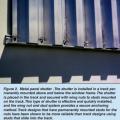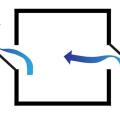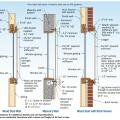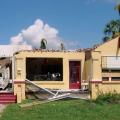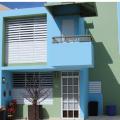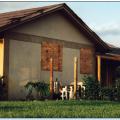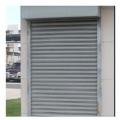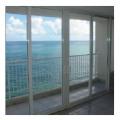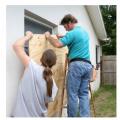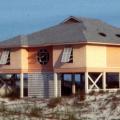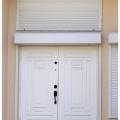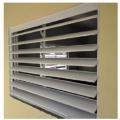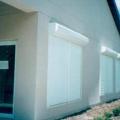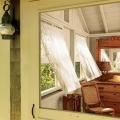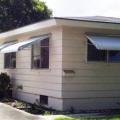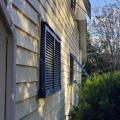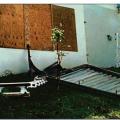Showing results 1 - 29 of 29
A metal storm panel is installed in a track permanently mounted above and below the window frame and secured with wing nuts to studs mounted on the track.
Accordion-type hurricane shutters protect sliding glass doors from high winds and wind-borne debris.
Anchorage failure in sliding glass doors due to negative pressures from hurricane force winds.
Casement windows or wing walls can create zones of higher pressure (right) and lower pressure (left) to encourage cross ventilation when wind is flowing parallel to window openings
End conditions for braced wall lines with continuous sheathing, Figure R602.10.7 in the IRC
Failure of Roof Structure from Pressurization Due to Window Failure During a Hurricane.
Hurricane force winds that breach external windows and doors can then cause failure of the entire building due to internal pressures on walls and roof.
Hurricane shutter styles include colonial, Bahama, roll-up, and accordion shutters.
In areas prone to high winds and hurricanes, double vertical “jack trim” and horizontal “header” and “sill” studs are recommended on all sides of window and door openings.
Jalousie windows use shutters rather than glass over the window openings to allow for maximum ventilation. Screens may be installed to keep out insects.
Permanent options for keeping sun off windows to minimize solar heat gain include permanent overhangs and awnings, frames, and louvers.
Plywood or OSB panels are a cost-effective way to protect windows from wind-borne debris.
Removable options for keeping sun off windows to minimize solar heat gain include awning, retractable and swinging shutters, interior or exterior curtains.
Right - Automatic metal roller shutters are always in place and can be electronically or manually opened and closed.
Right - Impact-resistant glass protects windows from wind-borne debris and is always in place, requiring no manual deployment during a storm.
Right - Panels of 7/16-inch treated plywood are inexpensive but take time to install and are difficult to install on higher windows.
Right - These homes have hurricane shutters to protect against high winds and to provide solar control.
Right - This home's windows have protective coverings that are raised to provide shade in good weather and can drop to protect the windows during high wind events.
Right – This aluminum jalousie window provides solar control while allowing view and ventilation.
The light-colored exterior roll-down shades on this building, and the shaded entryway provide very effective control of solar heat gain
The operable windows in this house are located at occupant level to provide comfort ventilation.
The unprotected glazing in this door was broken by roof tiles dislodged by wind.
The window awnings on this house provide a simple but very effective way to reduce solar gains while still allowing view, daylight, and ventilation through the windows
These aluminum Bahama shutters shade west-facing windows from afternoon sun and are approved for hurricane protection
Wrong - Glazing failed due to windborne debris during a hurricane.
Wrong - The window lying on the ground was protected by a shutter but the shutter was attached to the window frame, rather than directly to the wall framing.
Wrong – Window not protected and failed due to windborne debris in hurricane force winds.
